FASHION STYLING BY THE STUDENTS OF BSC. IN FASHION AND APPAREL DESIGN
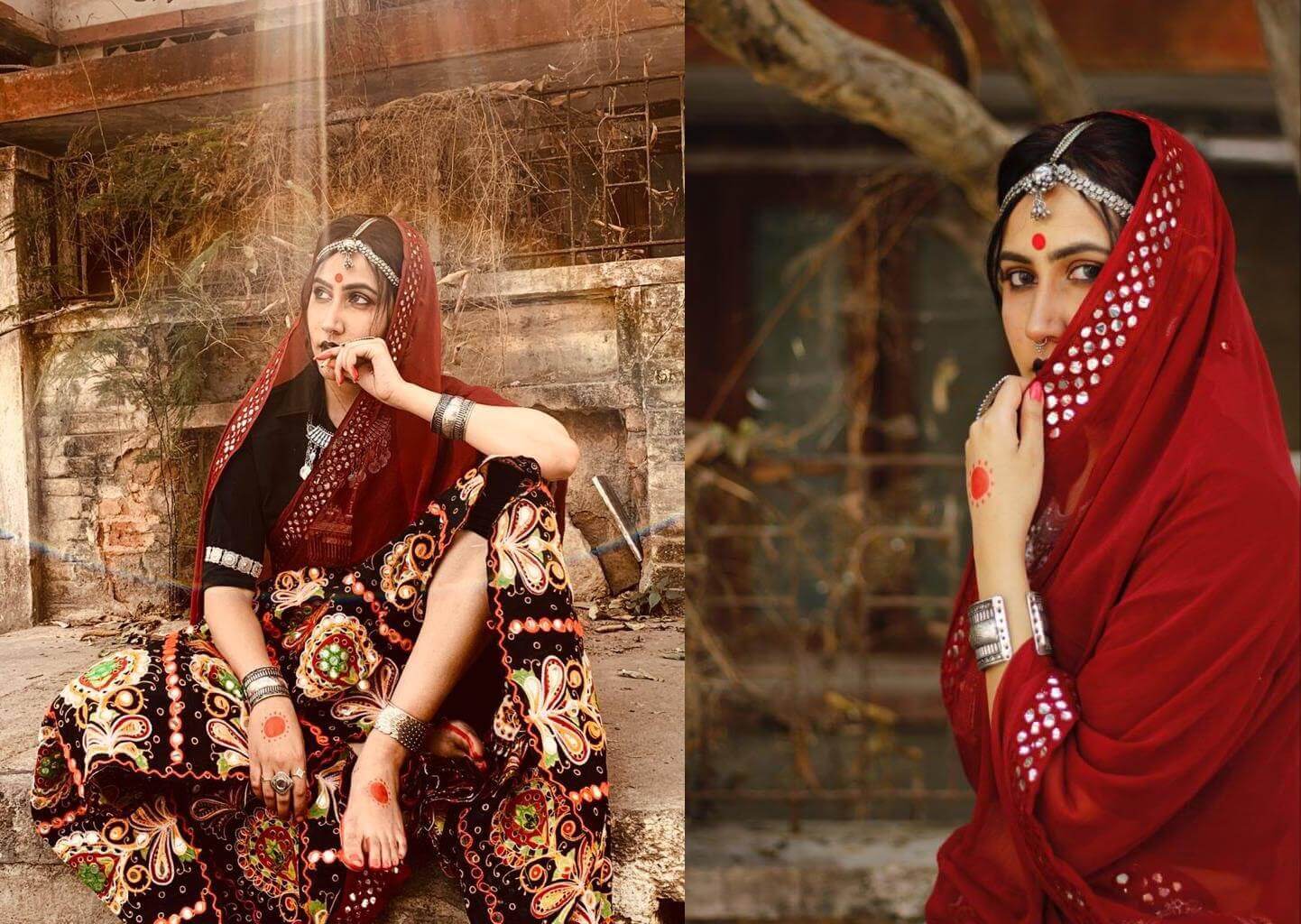
The Fashion Styling presentation made by the students of BSc. in Fashion and Apparel Design 2017 batch witnessed their interpretation of some of the well-known tribes. The idea was to showcase the elements intrinsic to their respective community, keep these intact whilst providing a modern narrative.
The topic on fashion styling is imperative to the fashion design course as it provides an in-depth knowledge on how to work around clothes to suit the story that one wants to convey. An eye for detail and research further help to craft a well-thought look. The nomadic tribes have some of the best garments. Intricate embroidery, motifs, accessories and colours each have a story that has been handed down from one generation to the next. Apart from this each element is handmade and is exclusive to the region that the tribes belong to.
Contemporary Banjara
The Banjara’s are a nomadic community of people from the Indian state of Rajasthan, now spread out all over the Indian subcontinent. The people of this community are defined by their tall structure, bold body language and strength. Men and women both are strong, hard-working, and blessed with a lot of endurance. The garments adorned by them exude their earthiness which are peppered with earthy shades and tones, intricate embroidery, unique combination of patchwork and mirror work alongwith exquisite accessories. Keeping these elements in mind, the model was styled in a very elaborate, colourful, and attractive three-piece garment which comprised of Phetiya, kaali, tukri known as ghagra (skirt), blouse (top), and dupatta which was adorned with tiny pieces of mirrors. The accessories comprised of a headpiece made up of rupayi billalu (coin), layered neckpiece along with ivory bangles and a dotted tattoo on her forehead to escape from the evil eye. The outfit was paired with ankle length leather boots to provide a dash of edge.
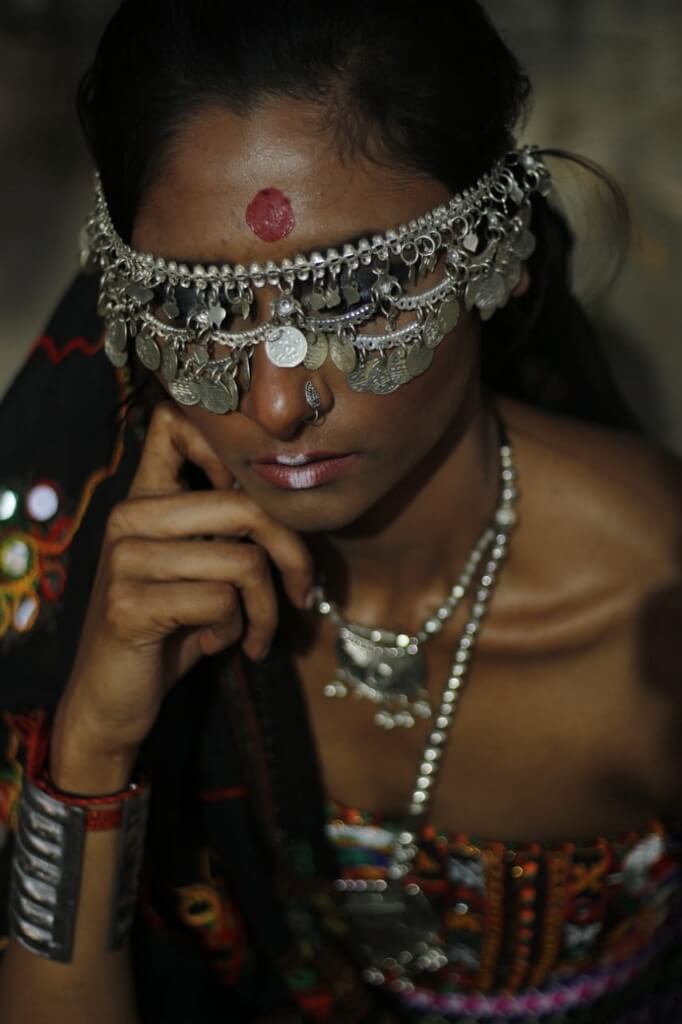
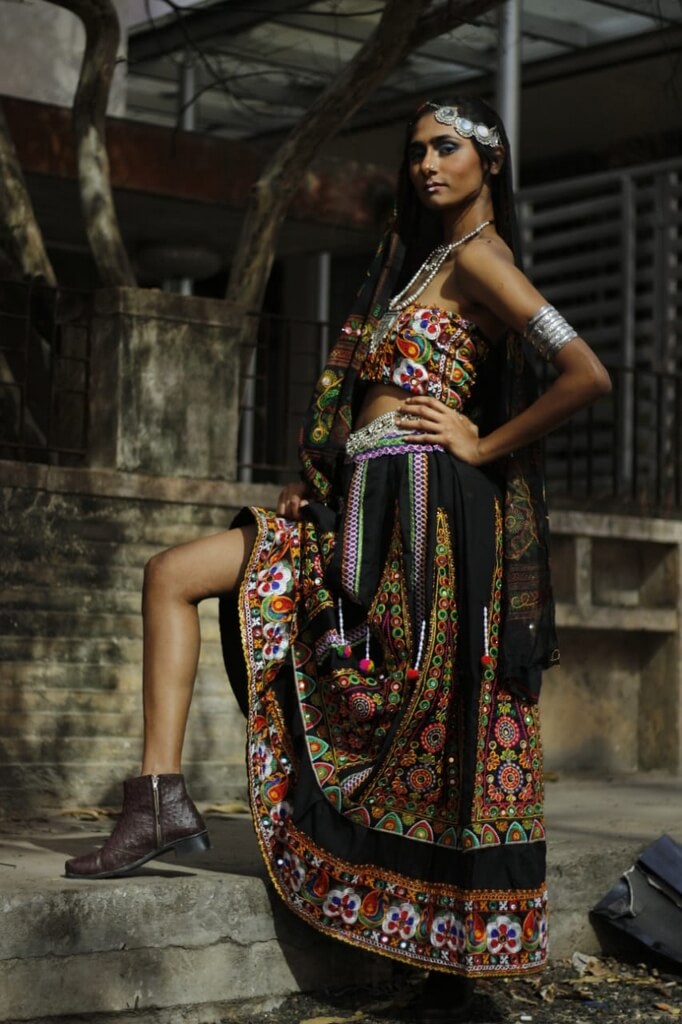
Nihang
Nihang is an order of Sikh Warriors, characterised by blue robes, antiquated arms such as swords and spears, and decorated turbans. The model was styled in a traditional Nihang dress with a combination of blue and orange known as “Khalsa Swarup”. The saffron depicts the Spiritual nature of Sikhism, whereas the blue takes away from the ascetic side by reminding about Temporal affairs. A slight high turban was given surmounted by steel quoits with a traditional dagger (kirpan) to make her look bold and fierce. Accessories such as a choker neckpiece with earrings and an iron bracelet around her waist were used to complete the look. In entirety the styling exuded the fierceness that one would encounter in a battlefield as a Nihang.
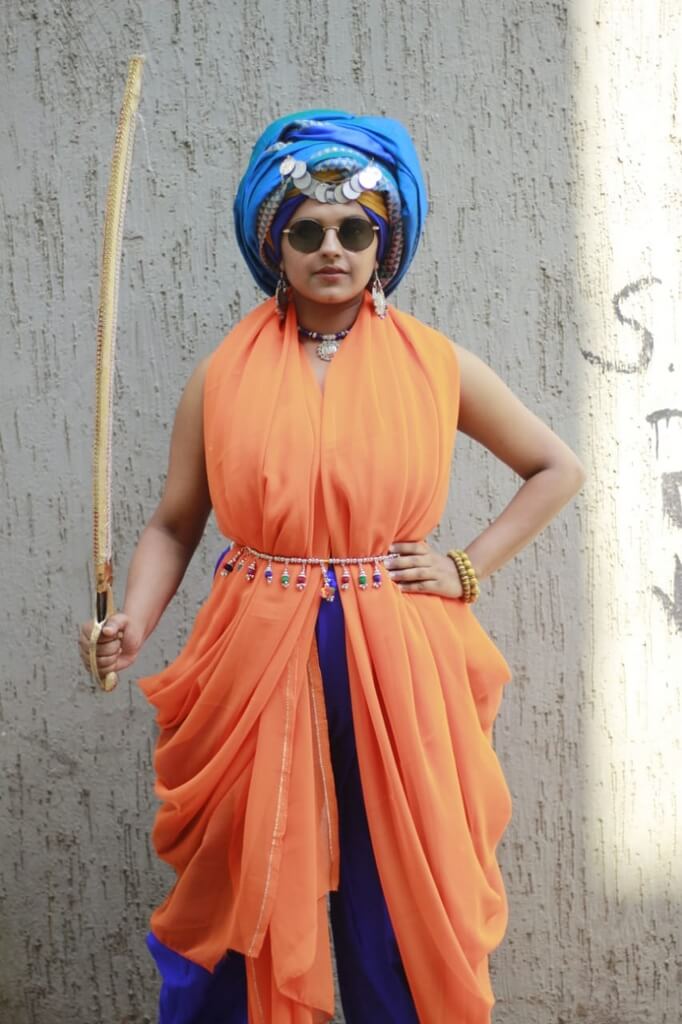
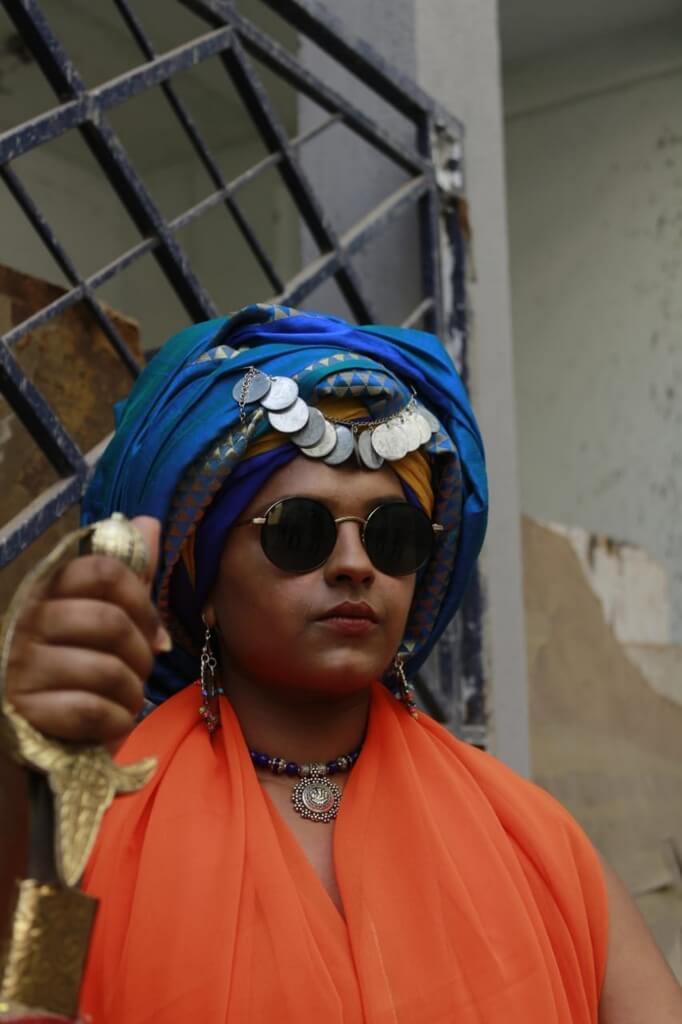
Bhil
The Bhil are one of the largest tribal groups, living in Chhattisgarh, Gujarat, Karnataka, Madhya Pradesh, Maharashtra, Andhra Pradesh, and Rajasthan. The tribal name is derived from the word ‘billu’ meaning bow. They are known to be excellent archers with a deep knowledge about their local geography. During the earlier times they were known to be experts in guerrilla warfare, however they have now taken up farming or are agricultural labourers. The Bhil tribe are also skilled sculptors. When it comes to clothing, the Bhil women wear traditional saris while men are dressed in long frock and pyjamas. The women put on heavy ornaments made of silver, brass along with necklaces made of beads and silver coins and earrings. The students sought inspiration from these elements of the Bhil tribe and styled the model in a traditional knee-length Ghagra and paired it with a black solid shirt and a mirror work dupatta. They gave her ornaments such as Pejania which is worn on arms, legs, and hands, and other oxidised ornaments like Kada, Baju Bandh, Nathni, and Kamar Bandh to give her a rawness. The red bindi was given to symbolise the Hindu culture. Whereas, the Alta design applied on hands and feet provided a traditional touch. Beedi was used as a prop to the model for an uninhibited tribal look along with bold lips to show her strong personality.
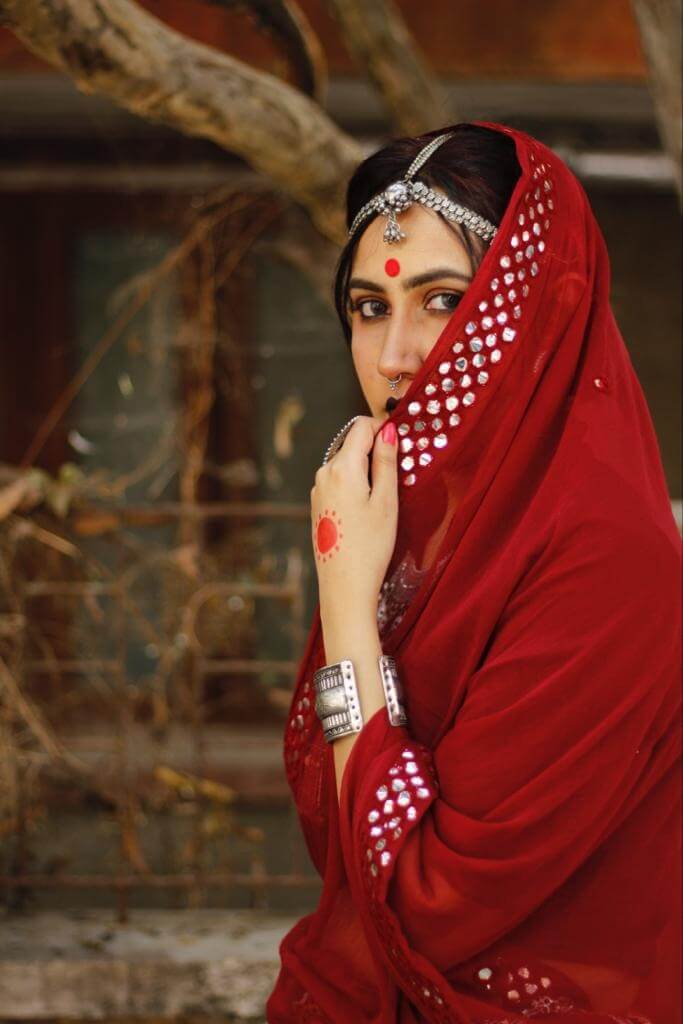
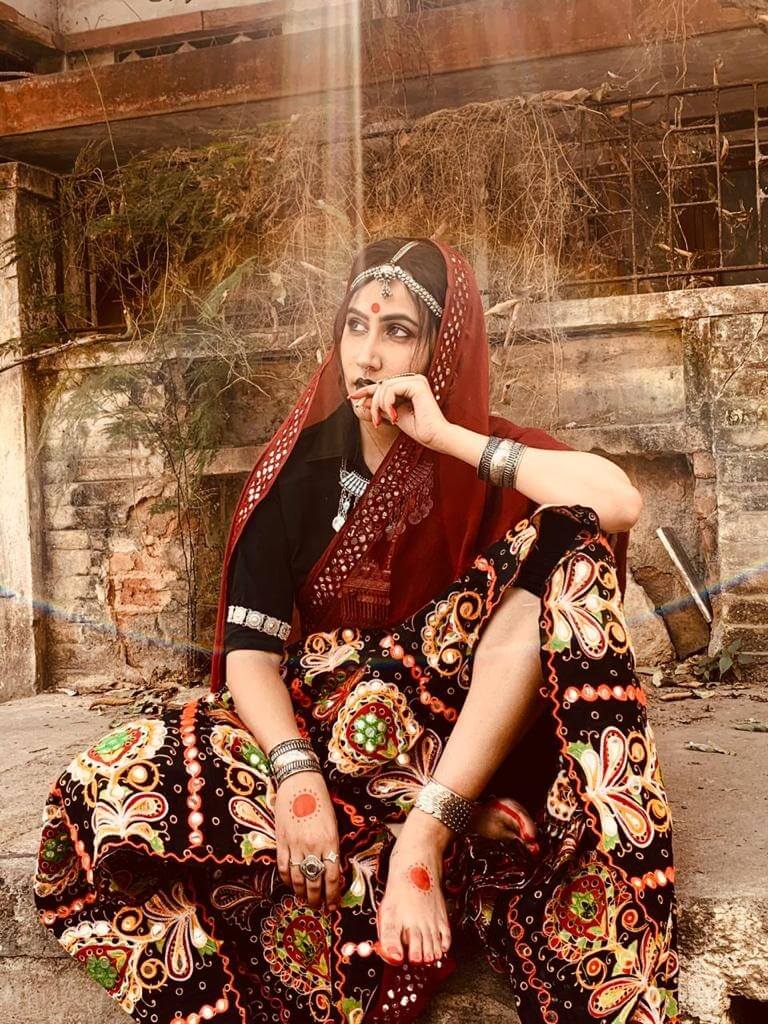
The Kuchi Tribe
The Kuchis are Pashtuns and are a dominant tribe from Afghanistan. Though most of them are settled now, they were once nomads. The garments worn by the women are an array of dazzling bright colours dotted with sequins and mirrors. Their accessories namely the chokers, necklaces, bangles, earrings and cuffs are extremely popular with its signature features such as coins, bells, and colorful hand-cut glass. The women usually have green tattoos on her chin and forehead. The traditional look was recreated by styling the model in heavy accessories like the neck-piece, a head chain and with a 3-tier chain on her waist. To give it a modern touch, she was given a crop top along with ankle-length pants and a hand-embroidered overcoat with a belt around her waist. This look was an exact reflection of a Kuchi tribal woman – bold and independent decked up in colourful, hand-embroidered clothes with hand-made jewellery.
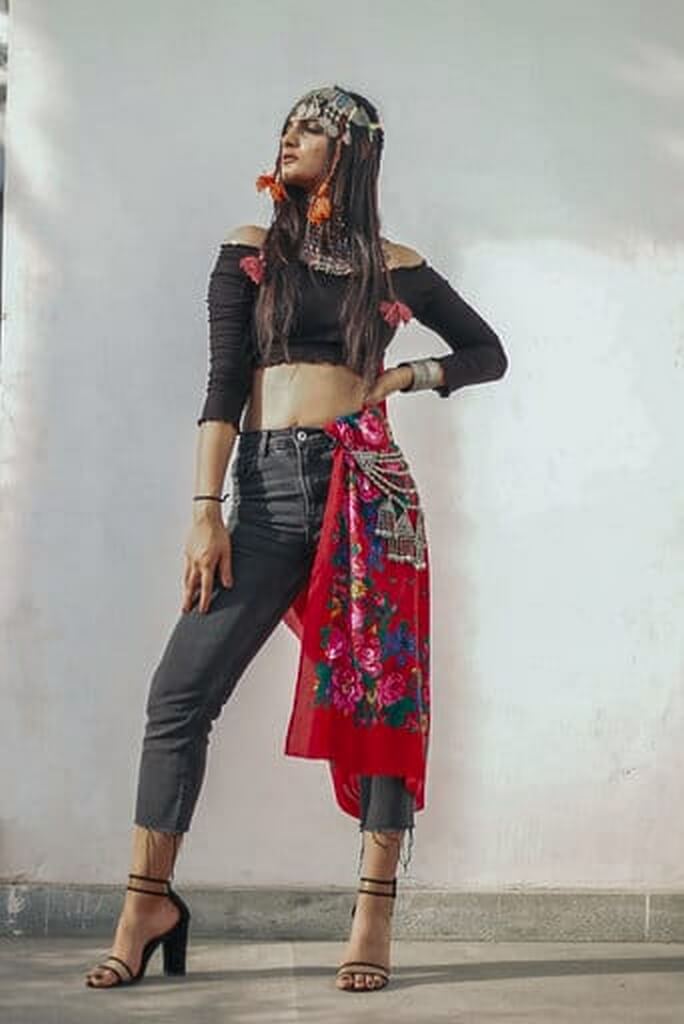
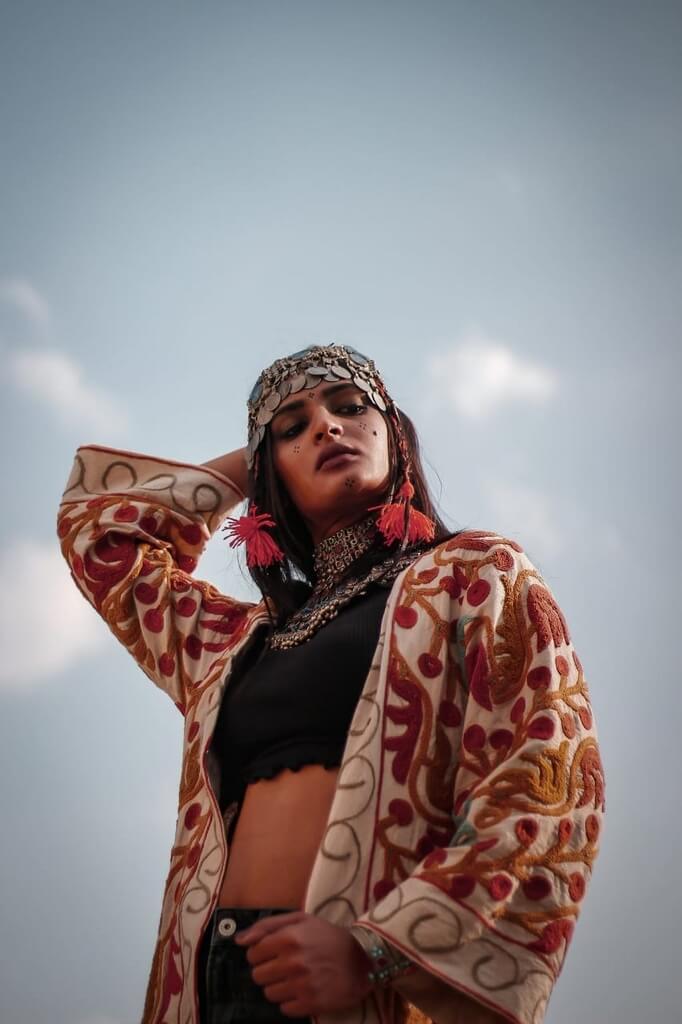
Aztecs
Aztecs originated as a nomadic tribe in northern Mexico. The clothing differed based on the status quo to differentiate each social class. The students incorporated elements from the various classes in the tribe to recreate the look. Since their clothing was rich in variety and had beautiful hues of colour achieved through dyeing. The ensemble also included pendants, feathers, furs, and other forms of decoration. The clothing also consisted of skirts and tilmas. A significant feature of the Aztec clothing was the headdress for which beautiful and colourful feathers of Quetzal were used. Keeping these elements in mind the fashion styling for this look included beautiful dyed and decorated clothes which included a knee-length skirt and top. They gave her a beautiful feathered headwear with shells on it and braided her hair with ornaments and ribbons.
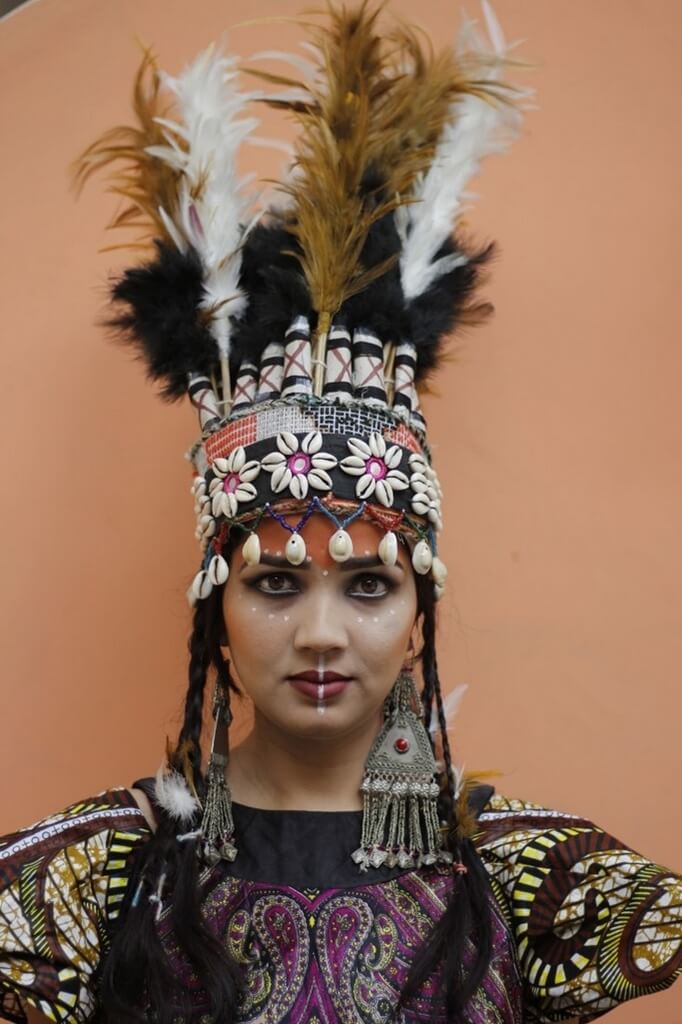
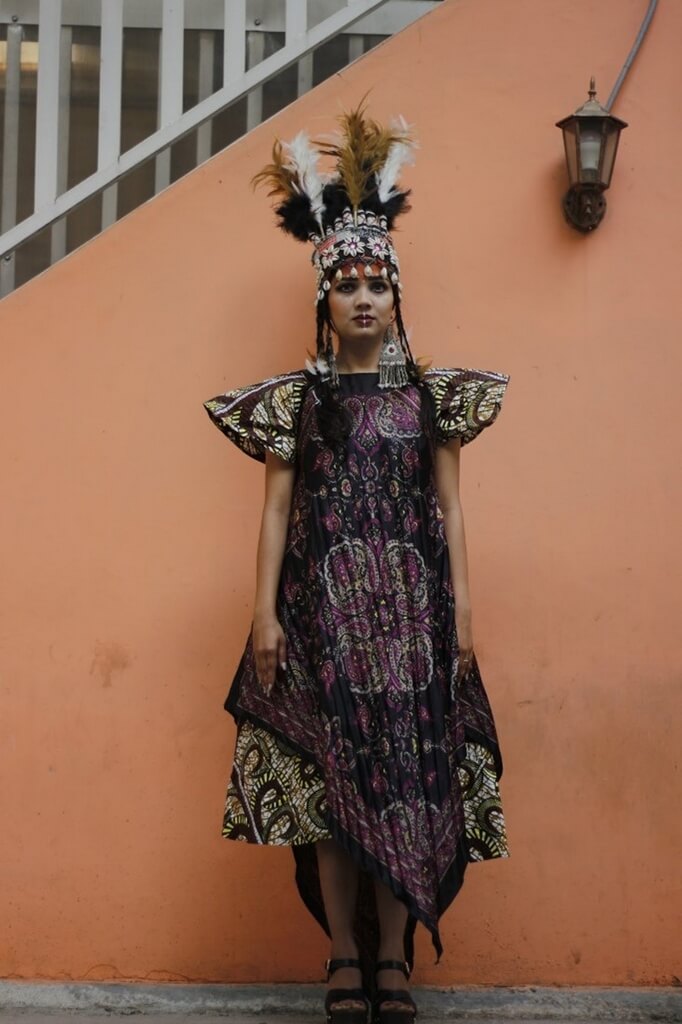
Fashion Styling offers students with techniques in image creation ensuring emphasis of style and look for a fashion collection, brand or product. It also encourages students to work on the presentation of creative ideas, upcoming trends and visual communication.
#fashionstyling #recreatingstyle #nomadictribe #tribalclothing #fashionstylinginspiration #fashiondesign #fashiondesigncourse #jdinstitute #jdinstituteoffashiontechnologybangalore #jdedge #riseagain #newnormal #fashionandappareldesign #handmade #layeredneckpiece #leatherboots #aztecstyle









